This June, we had the unique opportunity to collaborate on the creation and instruction of an intensive documentary film course at Georgetown University’s Villa Le Balze in Florence, Italy. The Villa holds a special place for us as we were both students there almost 14 years ago. Now professional filmmakers, we teamed up with Georgetown Film & Media Studies Director and College Dean Bernie Cook to develop a program that would unite film theory and hands-on storytelling practice. It was an an ambitious agenda. In the course of just three weeks, students would shoot and edit stories about life in Italy and present their finished films at a public screening in Fiesole, the town where the Villa resides. We understood the learning curve would be great, complicated further by the challenge for students to communicate in Italian. But the students exceeded our expectations. In many ways, their energy and excitement for filmmaking reenergized our own, an unexpected gift of this teaching experience.
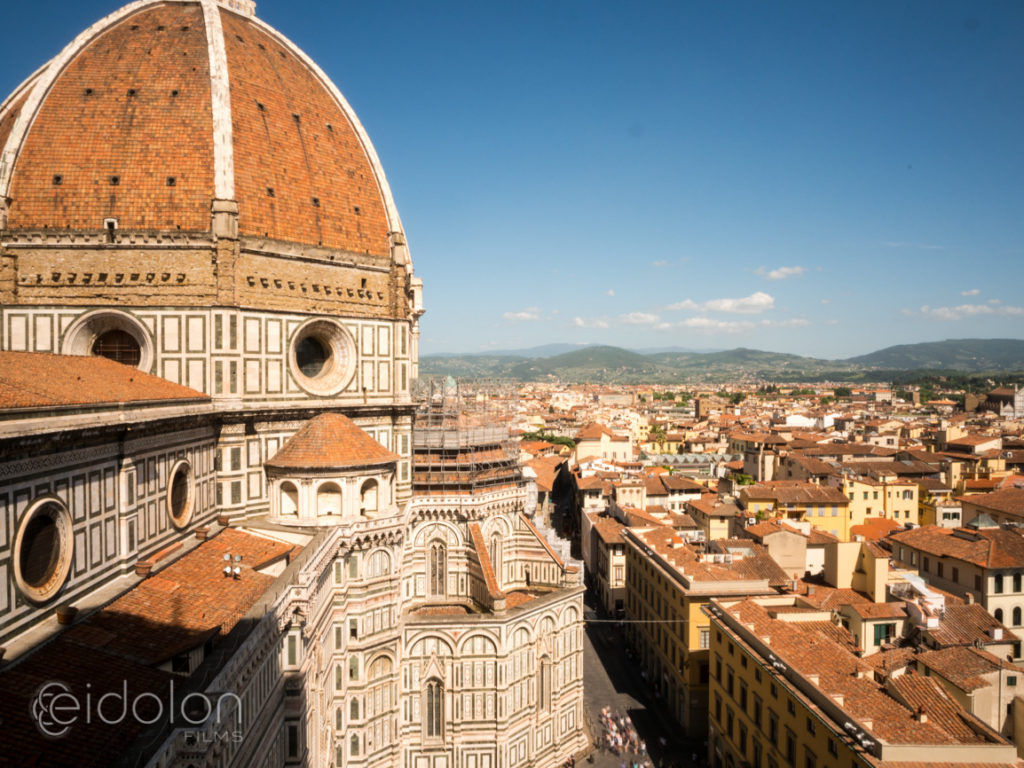
We talked a lot about how filmmakers come to their films. Sometimes it’s passion for an issue. Other times it’s aesthetic, happenstance, or a character that’s simply compelling. One team discovered their story on a Saturday morning while the class was practicing with the camera equipment in Fiesole. The students met a cute married couple selling cheese from a truck at the farmer’s market. She handled the cash while he passed the change. They had a distinct congeniality and rapport with each other that attracted the students, so their love story became the backbone of a film called “Amore e Parmigiano”. For Cinzia and Maurizio, the cheese truck is as much a passion for food as it is an avenue for a life worth living. It meant time with their only daughter. The story for the film could certainly be that simple, but we told the students to keep looking for tension. “What are the stakes?” we asked. The students pushed back, arguing that in no way would this story have great conflict. So we pressed on: It doesn’t have to be huge! Keep looking for tension that threatens this way of life, even in the smallest way. Indeed, by the end of production, they discovered the factor that complicated the simple story. Maurizio had stomach surgeries that worried Cinzia. Both recognized the world changing, even in Italy. Yet they would still hang onto this way of life. In the last scene of the film, they sat together to dine on pasta topped with parmesan.
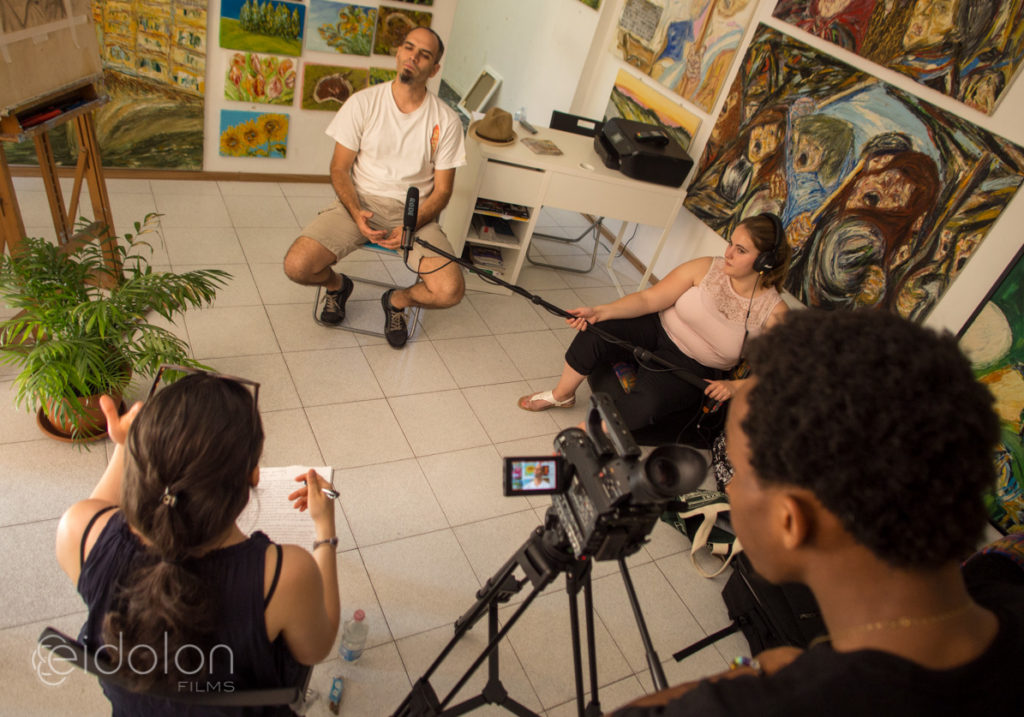
Group two found their story’s tension more easily. A flier passed around town piqued their interest in an Argentinian-Italian painter named Franco Orsi who sells paintings of Tuscan landscapes to tourists out of his studio in Fiesole. His passion is for more complicated work; tortured pieces about the disappeared in Argentina and portraits of his parents who are now deceased. Franco moved to Florence years ago because he was inspired by masters like Michelangelo. But in a town known for its art, he asks, “where is the art?” Gelaterias, pizzerias and copycat Tuscan landscape paintings instead compose the identity of Florence. The students struggled to represent Franco’s story through the observational mode of cinema verite filmmaking we suggested they employ. The mode doesn’t traditionally eschew interview content altogether, but it does rely on observational scenes in which the camera observes life as it is lived. “Show, don’t tell,” we urged them. Yet this approach often requires big investment of time, a luxury the students didn’t have. Knowing these limitations, they relied on interview content as the expository spine of the film and searched for opportunities where the visuals could speak more than Franco’s words. In one scene of “L’Artista”, Franco pounds clay on the floor to create a ceramic pizza that will ultimately be part of an artistic commentary on contemporary art in Italy. Ultimately, the students framed Franco’s art in a way that it could tell the story of his evolution as an artist and human being.
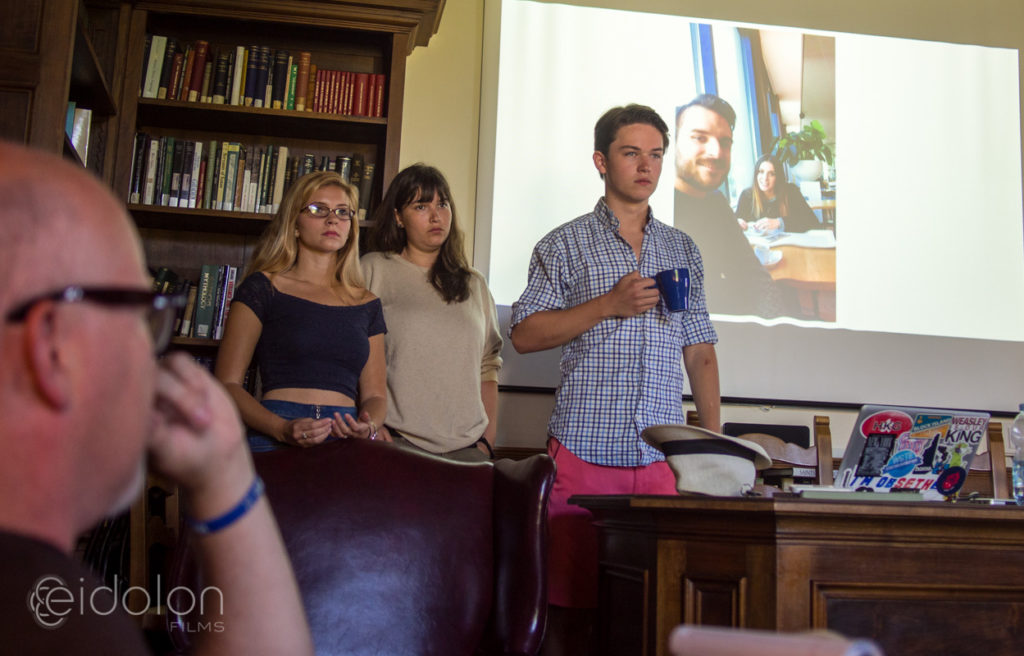
Team three found their story through a friend who lives outside of Florence. “Babi” is a University student who foresees the diminishing fortunes of young people in Italy, a topic that interested our students. Babi has visited the US and dreams of someday working there in finance. Dozens of souvenirs from her visits to US cities line a wall she calls the “crying wall” because she cries every time she looks at it. During the production period, Babi was preparing for an important exam. This provided the students an opportunity to capture something happening in her life in real-time. It lended to natural tension for the story and good verite moments such as when after the exam she laments to her classmates how she “bombed it.” But the team felt her story wasn’t enough to meet their vision, so they decided to add characters. They drew upon a group of high-schoolers working for the summer in Fiesole’s Etruscan ruins. While the new voices added more dimension to “The Young Italians”, they also presented a challenge to the cohesiveness of the student’s story. One of the teens had a passion for motorcycles. While images of a motorcycle zipping through cobblestone streets made for a fun scene, we challenged the students to connect it to the greater arc. A story in film should be a complex sentence with clauses and prepositions. The story needed to be more than “Gabriele has a motorcycle.” So we encouraged them to pursue: “Gabriele has a motorcycle because he’s a young teen with little agency who wants to live a fun and exciting life.” This proved to be the biggest challenge for the group, but one they overcame.
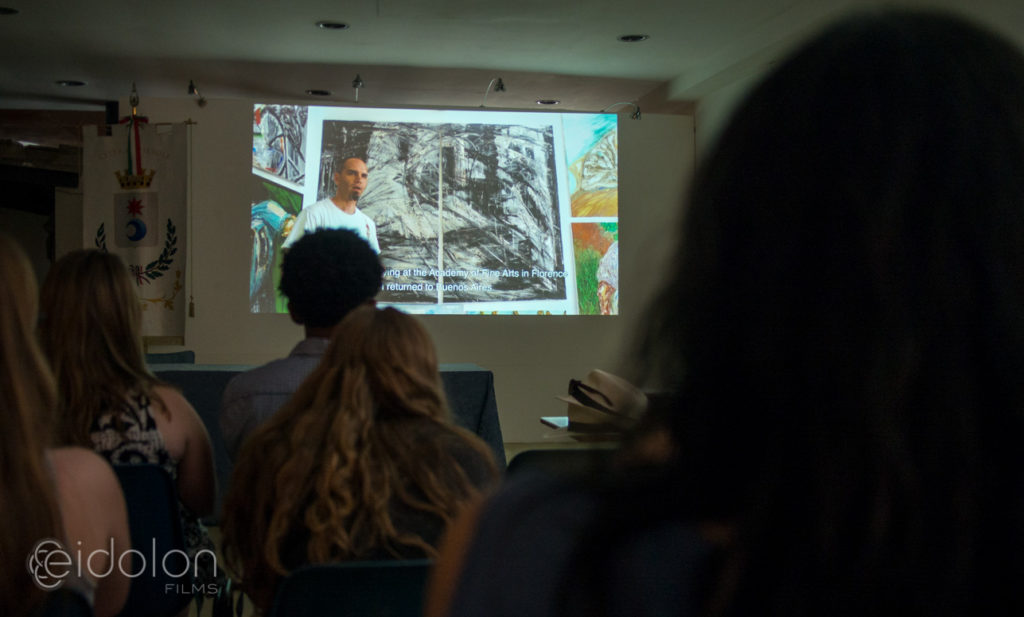
On the last day of the course, the students screened their completed films publicly in the Fiesole town center. The subjects of their films cried at seeing their life rendered on film. It’s a moment we’ve experience many times as filmmakers, but it was especially moving to watch our students experience it. In their reflection papers following the course, the students acknowledged the great challenge we put before them. They were challenged not just as storytellers, but also as team-members and as young people trying to understand the world around them. It was a privilege to be a part of that process and we look forward to offering the course again in summer 2018.
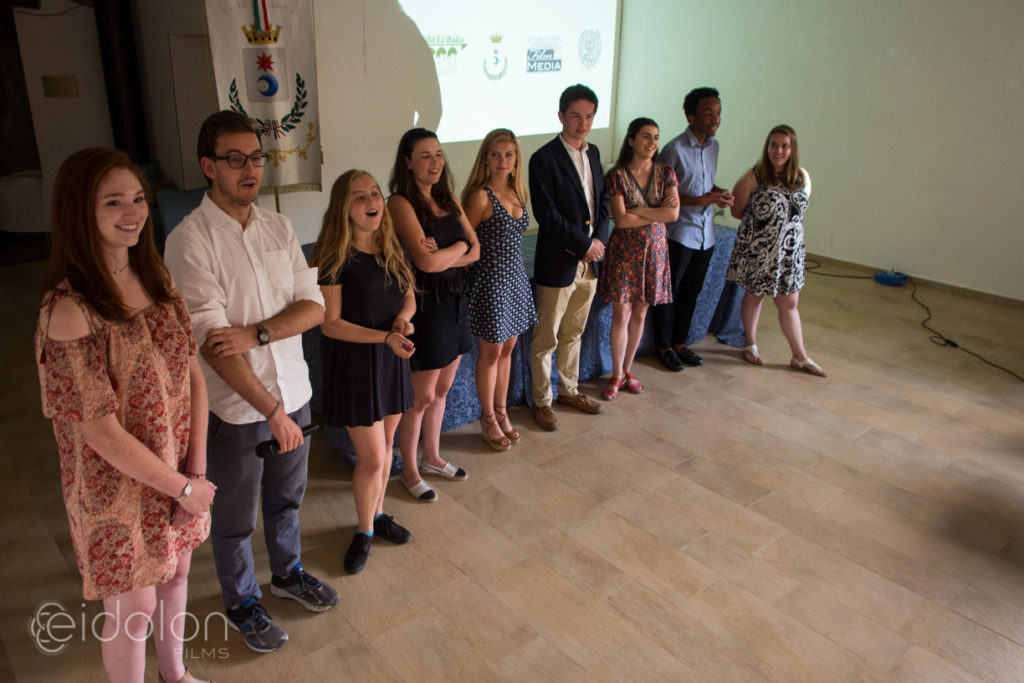
Watch the completed films: Amore e Parmigiano, L’Artista, The Young Italians